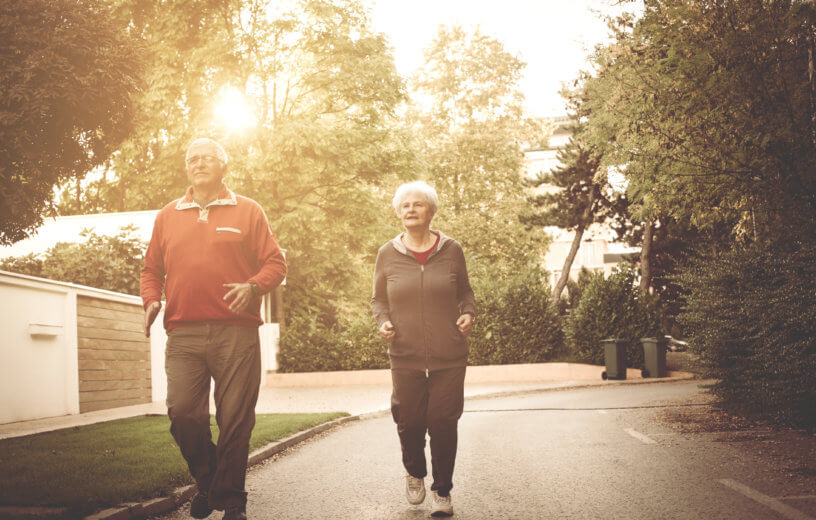CHICAGO — Older adults who find working out at the gym too daunting can still keep their bodies in strong working order by power-walking once or twice around their neighborhood every day. New research finds that just an hour of brisk walking each week — about 9 minutes per day — can help curb disabilities related to arthritis, achy joints, or stiff muscles among older individuals.
Researchers from Northwestern University’s School of Medicine say that walking at a moderate-to-vigorous pace — as if one was running late for an appointment or an arriving train — helps ensure that those growing more frail can still dress themselves or make it across the street before the signal changes with ease.
“This is less than 10 minutes a day for people to maintain their independence. It’s very doable,” says lead author Dorothy Dunlop, professor of preventive medicine, in a university release. “This minimum threshold may motivate inactive older adults to begin their path toward a physically active lifestyle with the wide range of health benefits promoted by physical activity.”
For their research, the authors studied data over four years on more than 1,500 adults from Baltimore, Pittsburgh, Columbus, Ohio and Pawtucket, Rhode Island who took part in the Osteoarthritis Initiative, a nationwide study launched to help shed insight into treatment and prevention of knee osteoarthritis. Participants reported feeling aches or stiffness in lower extremity joints from the condition at the start of the study, but had not been diagnosed with any sort of disability. Researchers outfitted them with accelerometers to track their physical activity.
At the end of the four year period, nearly a quarter (24 percent) of participants who did not log the weekly hour of brisk physical activity were found to now walk at pace that couldn’t get them across the street safely before the signal changed. Another 23 percent reported various struggles in completing their daily routine after waking up.
The authors calculated that those who did power-walk for more than an hour in total for the week were 85 percent less likely to suffer from a mobility-related disability (being incapable of walking less than a meter per second) such as walking across the street safely. Similarly, their risk for battling a daily living disability, such as being incapable to bathe or dress themselves, dropped by 45 percent.
The current guideline for older adults suggests at least 2.5 hours a week of moderate-intensity activity, not just to increase mobility, but to lower their risk of heart disease and other chronic ailments. But for many elder individuals who don’t have the strength they once had to get up and go so easily, even 2.5 hours can feel undoable. Researchers believe this latest finding may make getting outside for a bit seem more realistic.
“We hope this new public health finding will motivate an intermediate physical activity goal,” says Dunlop. “One hour a week is a stepping stone for people who are currently inactive. People can start to work toward that.”
The study is published in the American Journal of Preventive Medicine.
